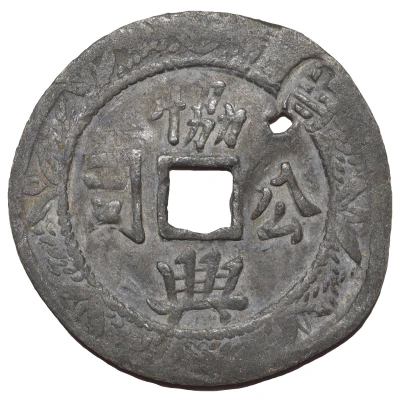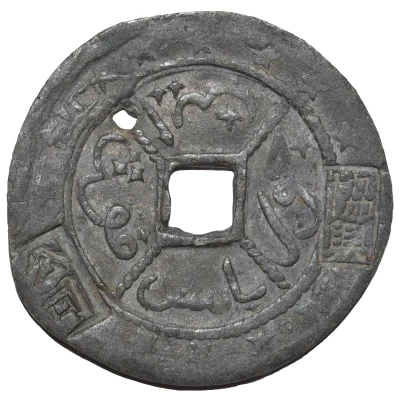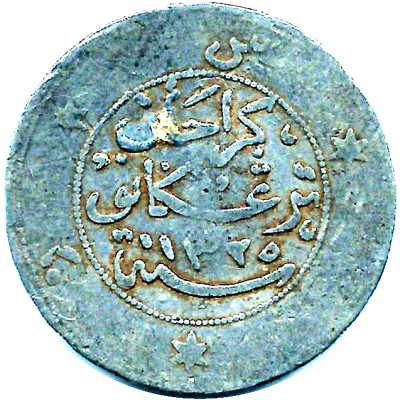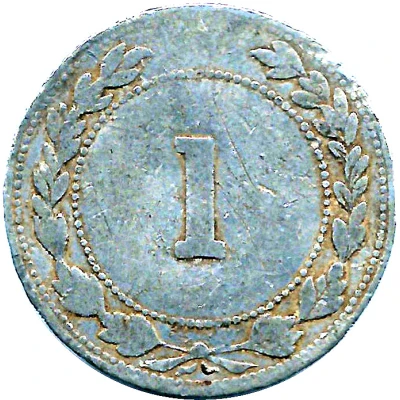


© Fred Cherrygarden
1 Jokoh - Hiaphin Kongsi ND
1895 year| Tin | 9.98 g | 32 mm |
| Issuer | Sultanate of Trengganu (Islamic states of Malaysia) |
|---|---|
| Type | Standard circulation coin |
| Year | 1895 |
| Value | 1 Jokoh (0.025) |
| Currency | Keping (1709-1909) |
| Composition | Tin |
| Weight | 9.98 g |
| Diameter | 32 mm |
| Thickness | 1.3 mm |
| Shape | Round with a square hole |
| Demonetized | Yes |
| Updated | 2024-10-06 |
| Numista | N#281977 |
|---|---|
| Rarity index | 97% |
Reverse
Arabic inscription in Malay language segmented into four quarters by beaded lines. Surrounded by beaded circle and stars. Chinese countermarks on rim.
Script: Arabic
Lettering:
اين / جور/ باحس/ فوڽا
(協典)(公司)
Unabridged legend:
ini juru bahasa punya
(Hiap hin)(Kong si)
Translation:
This is the interpreter's
(Hiap Hin)(Company)
Edge
Plain
Comment
Private monetary token (jokoh), issued in 1895 during reign of Sultan Zainal Abidin III (1881-1918) by Sultan's Juru Bahasa (Chinese Interpreter) in lieu of salary.Reference: Singer-38.
Interesting fact
One interesting fact about the 1 Jokoh - Hiaphin Kongsi ND (1895) coin from the Sultanate of Trengganu (Islamic states of Malaysia) is that it was made of tin, which is a relatively soft and malleable metal. This is unusual for coins, which are typically made of more durable materials like copper, silver, or gold. The use of tin for this coin may have been a deliberate choice to make it more accessible and affordable for the people of Trengganu, or it may have been a practical decision due to the availability of tin in the region. Regardless of the reason, the tin composition of this coin makes it stand out from other coins of its time and adds to its unique historical significance.

